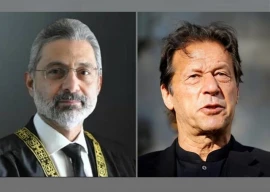
MUMBAI:
With in-principle status of Most Favoured Nation (MFN) granted to India by Pakistan, Indian oil companies – such as the Hindustan Petroleum Corporation (HPCL), the Indian Oil Corporation (IOCL) and GAIL India – are gearing up to cash in on the opportunity by exporting petroleum products and gas to its energy-starved neighbour. Pakistan’s existing refining capacity meets only half its total domestic requirement, while India now exports almost one fourth of its 185 million tonne refining capacity.
“Pakistan’s move to ease trade with India could translate into a big opportunity for HPCL, as it will be best positioned to use its INR19,000 crore Bhatinda refinery as a critical gateway. It will be a pragmatic business model, where revenue will more than offset relatively low investment in the pipeline,” said a Mumbai-based oil analyst.
Affirming speculation, an HPCL board member told the Times of India on Saturday that: “we plan to tap capital markets as soon as our Bhatinda refinery is nearing completion. A part of the initial public offering proceeds will be used to build a product pipeline to Lahore. We are strategically located to sell our products to Pakistan as the border is less than 50 km away from our refinery.”
Exporting gas is also a good opportunity for India’s largest gas transporter and marketer GAIL, as Pakistan does not have a liquefied natural gas (LNG) terminal and the country is likely to experience its gas crisis by 2016, when the shortfall is expected to hit over three billion cubic feet (bcf) per day, a report said.
Even India’s biggest oil refiner, the Indian Oil Corporation, is exploring possibilities to connect its Panipat and Mathura refineries with the Bhatinda product pipeline, so that it may also export its products to Pakistan.
A Pakistan delegation led by petroleum and natural resources secretary Mohammad Ejaz Chaudhry is in New Delhi holding talks on ways to facilitate trade in petroleum products and petrochemicals between the two nations.
Published in The Express Tribune, March 25th, 2012.
COMMENTS (10)
Comments are moderated and generally will be posted if they are on-topic and not abusive.
For more information, please see our Comments FAQ

































































@Truthbetold: Gasification technology is not as simple as you write either. It has the potential to contaminate the underground water with poisonous methane. Factors such as how far below the coal reserve is the underground water and how strong are the barriers between the coal reserves and water reserves are to be considered. Gasification is not in commercial use on a large scale anywhere in the world today. As the coal deposits in Pakistan are of very poor grade, underground gasification may be the best way to use it for power generation. Technology should obtained from others to use the coal deposits safely without contaminating the underground water resources which is the lifeline for Baluchistan.
@Naeem Siddiqui:
"Dr. sammar mubarak have been provided enough fund for his experimental 50MW coal gasification power plant let him deliver on this first."
Gasification technology is a well-proven technology and doesn't require any experimental plant. If Pakistan is serious, all it has to do is to give the contract to any of the reputed global gasification technology companies to directly implement the project. While gasification is a proven technology, it is more efficient to burn coal directly to produce electricity. If Pakistan had been really serious about coal technologies to produce energy, it would have already installed significant capacity a long time ago. The truth is that the establishment wants to blackmail the global community into giving Pakistan unrestricted access to nuclear technology. The establishment feels it would lose the argument of energy needs if significant coal-based energy projects are fructified.
No interest!
a stupid stupid move. Never become dependant on anyone especially not on India. We go for own coal, gas and nuclear and wind/solar technology. This bl* government is selling out instead of developing own capability. Argh!!!
@Upendra Awasthi:
"Let SARC nations consider constituting into a confederation joining hands for trade, commerce, defense, communication,food & energy security, jointly tapping common resources, reducing defense budget for diverting resources for education, employment generation, health care, housing and other infrastructure developments. A system of mechanism should be development for amicable mutual settlements of all bi or trilateral disputes by peaceful negotiations or arbitration."
A very noble suggestion. Should have been a reality by now, but the truth is, only India is in a position to make this happen.
@abc
Dr. sammar mubarak have been provided enough fund for his experimental 50MW coal gasification power plant let him deliver on this first.
Dr. sammar mubarak loves big mouthing on TV channels instead of working on ground.
@abc: Government should go for Coal projects. Indian Politicians made $211 billion from coal projects.
why the govt not providing funds for thar coal project which Dr. sammar mubarak claims quite benificial for pakistan and yet the the govt is focusing on other options
Let SARC nations consider constituting into a confederation joining hands for trade, commerce, defense, communication,food & energy security, jointly tapping common resources, reducing defense budget for diverting resources for education, employment generation, health care, housing and other infrastructure developments. A system of mechanism should be development for amicable mutual settlements of all bi or trilateral disputes by peaceful negotiations or arbitration.